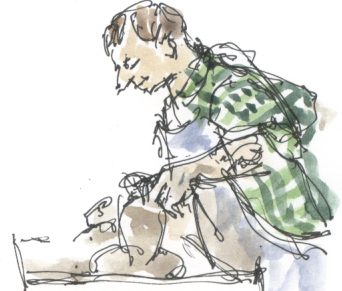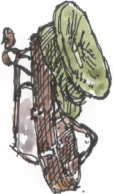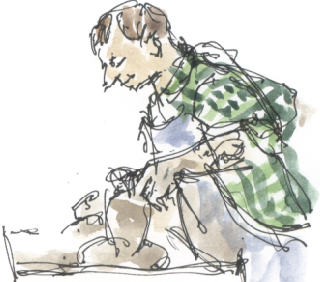previous | home page | this month| e-
Yew Tree Barn
Richard Bell’s nature diary, Cumbria, Friday, 14th November 2008
previous | home page | this month| e-
OUR FRIEND David takes us on a walk over Hampsfell along the limestone ridge that forms the backbone of the Cartmel Peninsula. Their are views of the Lakeland fells to the north, Morecambe Bay to the south and, in the broad valley to the west, of the village of Cartmel itself.
Going under the carriageway of the new High & Low Newton Bypass of the A590 to the now quiet hamlet of Low Newton we have lunch at the Hat Trick Café. I’d like to come back again and again drawing a different hat and sampling another item on the menu each time.
There must be at least 30 different items of headgear, so my project might take a while to complete . . .
The café is one of the attractions of the Yew Tree Barn craft centre at Low Newton. I sketch Graham Glynn turning one lump of clay after another into vases. I assume that he’s turning out a batch of items but then I notice that each is subtly different. He tells me that he deliberately starts with balls of clay of varying sizes so that each pot turns out to be an individual.
The wonderful hares and other animals and figures that he makes are produced by a different process. He starts by building the body as a coil pot in a clay that contains more grog (sandy particles), adding limbs, head and ears.
My art college experience of producing figures in clay was that mine tended to explode
in the kiln because I’d left air pockets in the clay. Glynn tells me that the air
spaces within the hare are interconnected.  We watch
We watch

